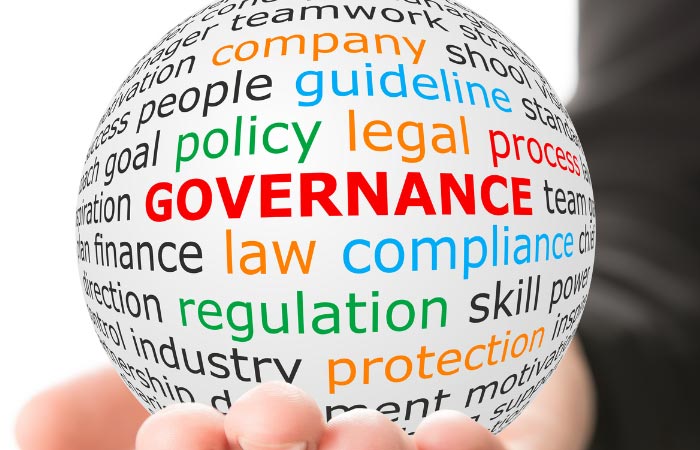In the fast-paced world of technology, businesses and organizations are continually navigating complex landscapes. Ensuring that information technology (IT) aligns with business goals and operates efficiently is no small feat. This is where IT governance comes into play. In this comprehensive guide, we will unravel the layers of IT governance, exploring its meaning, benefits, and why it holds paramount importance in the digital age.
Understanding IT Governance
Defining IT Governance
IT governance is the set of processes, structures, and mechanisms that ensure the effective and efficient use of IT resources to support organizational goals. In simpler terms, it’s about making sure that IT is aligned with business strategy and delivers value while managing associated risks.
Key Components of IT Governance
- Strategic Alignment
- Involves ensuring that IT objectives and activities are integrated with the overall business strategy. It’s about IT not operating in a silo but working collaboratively to achieve organizational goals.
- Risk Management
- Mitigating risks is a critical aspect of IT governance. This involves identifying potential risks related to IT systems and implementing measures to minimize these risks, protecting the organization from potential harm.
- Resource Management
- Efficient use of IT resources is fundamental. This includes optimizing hardware, software, and human resources to ensure they are used effectively and contribute to organizational success.
- Performance Measurement
- Monitoring and measuring IT performance is essential for continuous improvement. Metrics and key performance indicators (KPIs) help in assessing how well IT is delivering value and meeting objectives.
Benefits of IT Governance
Enhanced Decision-Making
Effective IT governance provides a framework for decision-making. It ensures that decisions related to IT align with the organization’s strategic goals, contributing to better overall decision-making processes.
Improved Risk Management
By identifying, assessing, and managing risks, IT governance enhances the organization’s ability to respond to challenges. This proactive approach minimizes the impact of potential disruptions.
Increased Stakeholder Confidence
Stakeholders, including customers, employees, and investors, gain confidence in the organization when they see that IT is well-managed. This confidence is crucial in building strong and lasting relationships.
Regulatory Compliance
In today’s highly regulated environment, adherence to regulations is non-negotiable. IT governance ensures that the organization complies with relevant laws and standards, avoiding legal complications.
The Importance of IT Governance
Strategic IT Alignment
Digital Transformation
In the era of digital transformation, where businesses are rapidly adopting digital technologies, IT governance plays a pivotal role. It ensures that digital initiatives align with business strategy, fostering innovation and competitiveness.
Data Security and Privacy
Cybersecurity
With the increasing frequency and sophistication of cyber threats, data security is a top concern. IT governance establishes protocols and measures to protect sensitive information from breaches.
Operational Efficiency
Optimizing IT Resources
Wasteful use of IT resources can be costly. IT governance streamlines processes, making sure that resources are used optimally, leading to increased efficiency and cost-effectiveness.
Adaptability to Change
Agile IT Governance
The business landscape is dynamic, and organizations need to adapt quickly. Agile IT governance frameworks ensure that the organization can respond promptly to changes in the market or industry.
IT Governance in Action
Case Study: Digital Government Services
E-Government Initiatives
Governments worldwide are leveraging IT governance to enhance citizen services. E-government initiatives streamline processes, making government services more accessible and efficient.
Looking Forward: Trends in IT Governance
Emerging Technologies
Blockchain and IT Governance
Blockchain technology is gaining prominence in ensuring transparency and security. Integrating blockchain into IT governance frameworks can enhance trust and accountability.
AI and Automation
Role of AI in Governance
Artificial intelligence is transforming how governance processes operate. From automated risk assessments to predictive analytics, AI is becoming a valuable asset in IT governance.
Conclusion
In conclusion, IT governance is not merely a buzzword; it’s a strategic imperative in the digital landscape. As businesses and governments alike navigate the complexities of the IT realm, a robust IT governance framework becomes the guiding compass. It’s about making IT work for the organization, ensuring that it’s not just a support function but a driving force behind innovation, efficiency, and sustained success.
As we step into 2024, the importance of IT governance will only intensify. Organizations that embrace and evolve with the principles of IT governance will find themselves better equipped to face the challenges and opportunities that the digital future holds.
For further insights into optimizing your IT governance or exploring related services, consider Telirco’s expertise. Our commitment is to empower organizations through effective IT solutions, aligning technology with strategic goals for a brighter digital future.

